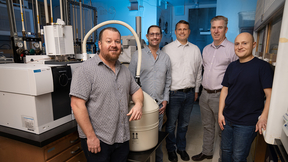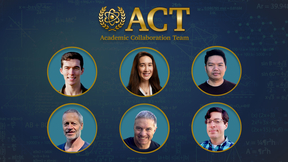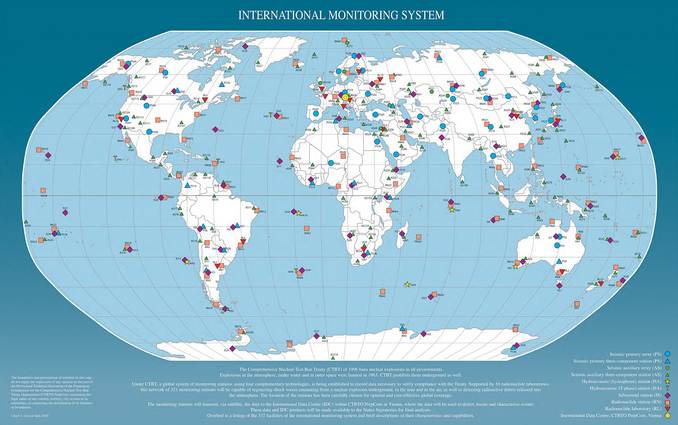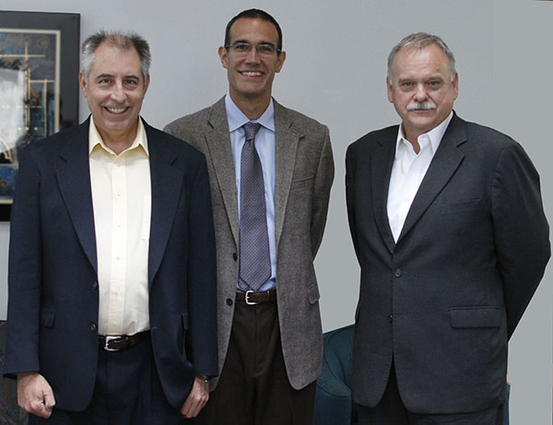Lab scientist and engineers train to be inspectors for Test Ban Treaty Organization
Of the five U.S. surrogate inspectors selected for the international program by the CTBTO in 2010, three were from Lawrence Livermore. Dekin and Felske, both of Engineering, were chosen because they are among the few weapons lab researchers with nuclear explosive test experience (the United States has not conducted nuclear explosive tests since 1992). A geophysicist by training, Ford was selected for his expertise in seismology -- a skill essential to detecting illicit underground nuclear explosions.
Once the treaty goes into effect, on-site inspectors approved by the Treaty's Conference of States Parties would serve on multi-disciplinary, multinational teams that would, under the terms of the inspection mandate, seek to clarify if a nuclear explosion had taken place in violation of the terms of the treaty.
There are currently a total of 183 member states to the treaty, 159 of which have ratified the treaty. There are eight "Annex 2" countries, which must ratify the treaty for it to enter into force. The United States is one of those "Annex 2" countries, which have signed the treaty but not ratified it. Ratification by the U.S. requires the advice and consent to ratification of the treaty by the U.S. Senate.
The training of surrogate inspectors is organized by the CTBTO Preparatory Commission, whose job is to put a verification infrastructure in place for such time that the treaty takes effect. When all required member countries have signed and ratified the treaty, the inspectors approved by the Conference of States Parties will no longer be 'surrogates,' but be available as active, on-site inspectors (for more, see the CTBTO Website ).
Training is a shared responsibility with participants instructing in their field of expertise. "One of the benefits of the training is that we work with and learn from world class scientists," Ford said. "I have had the privilege of working with top seismologists in the field."
Dekin said training is in the five principal methods used for inspecting sites: visual observation; continuation phase techniques; geophysics; radionuclide detection; and seismic monitoring. Continuation phase techniques consist of using intrusive methods to uncover evidence of tests. Inspections start with the least invasive techniques -- visual observation -- and gravitate to more invasive methods, such as active seismic and drilling for samples, as necessary.
"Ultimately, it comes down to collecting radionuclide samples of interest," he said. "That has the potential of providing conclusive evidence."
Prior to joining the Laboratory's Nevada Test Site (NTS) operations in 1996, Dekin was a naval officer in the Defense Nuclear Agency (DNA) serving as Chief of Field Engineering at the NTS. A civil engineer by training, he was responsible for the conduct of horizontal nuclear weapons effects tests for DNA and later, as a military research associate (MRA) for the Laboratory, he served as field engineer for vertical nuclear weapons tests. Dekin's CTBTO inspection role is assessment by visual observation.
"An area targeted for inspection could potentially be as large as 1,000 square kilometers," he said. "So it's important to narrow down the area through visual observation, both ground based and over-flight."
From the air, inspectors would look for "visual anomalies" such as rock falls, ground slippage or other disturbance, and structures such as tunnels that appear out of place.
Dekin, Felske and Ford participated in Build-Up Exercise III from May 27 - June 7, 2013, 2013, at the Hungarian military forces training area near Veszprem, Hungary, as preparation for the CTBTO On-Site Inspection Division's Integrated Field Exercise to be conducted in Jordan during November-December 2014. This was the latest in a series of "build-up" exercises the group has conducted in preparation for the 2014 Integrated Field Exercise, and about 150 people representing 40 countries participated. The goal of the exercise was to test newly developed technologies and procedures crucial to inspection team operations in field conditions.
"The purpose was the practical application of select on-site inspection techniques in an intensive series of field missions conducted over 12 days," Felske said. "It was a grueling 12-hour-a-day schedule in all weather conditions, but always interesting work. The group was spirited and highly motivated. We really enjoyed the international interactions."
Felske has worked for LLNL at NTS for 31 years. Before nuclear explosive testing ended, he served in the Containment Program. In September, he will undergo additional training in Sicily. "We feel honored to represent the Laboratory and the DOE/NNSA in this effort to bring the treaty into force," Ford said.
Dekin agrees and adds that building an infrastructure for the CTBTO is an important service to the nation and the global community. "We wouldn't be here if it wasn't in the national interest to do so."
Contact
Donald B Johnston[email protected]
925-423-4902
Related Links
Comprehensive Nuclear-Test-Ban Treaty OrganizationTags
ScienceStrategic Deterrence
Featured Articles









